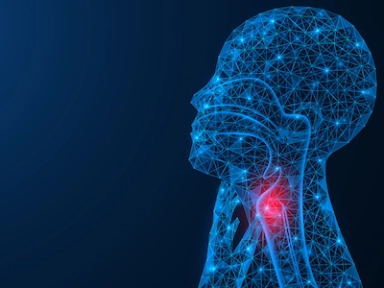Understanding eosinophilic esophagitis (EoE)
EoE is a chronic, progressive, inflammatory disease with rising prevalence among children and adults 1-3
- Approximately 1 in 4000 people have EoE worldwide4
- Misdiagnosis or underdiagnosis can cause delays of up to 10 years2
- Behavior modification
- can mask symptoms and further delay correct diagnosis and treatment2
- EoE has a High disease burden,causing daily disruptions and restrictions for patients and caregivers1
Dysphagia
Characterized by discomfort during meals due to difficulty swallowing and the need to frequently intake fluids while eating
Chest pain (noncardiac)
Presents in the majority of patients with eosinophilic esophagitis
Fibrostenosis of the esophagus
Fibrosis gradually leads to stenosis (narrowing) in many patients with eosinophilic esophagitis
Food impaction and bolus removal
Food impaction is a direct consequence of esophageal fibrosis and tissue remodeling. Removal of food bolus impaction frequently involves an urgent endoscopic intervention
Impaired quality of life
Frequent vomiting, restricted diets, social isolation and rejection, fatigue, increased emergency room visits, and higher economic burden
Eosinophilic esophagitis is a chronic, progressive, inflammatory disease, characterized by endoscopic and histologic changes to the esophagus1,4
Progressive remodeling and fibrosis may lead to esophageal strictures, which worsen dysphagia and may result in food impaction and require dilation1,4
Despite current management strategies, many patients continue to have active EoE symptoms9,10
There remains an unmet need to reduce esophageal dysfunction and eosinophil-predominant inflammation in order to improve endoscopic signs, clinical symptoms, and quality of life in patients with EoE
While successful for some patients, current standard of care9,10:
- Leaves many patients symptomatic, with no long-term treatment options
- Does not fully address type 2 inflammation — the underlying cause of EoE
- Does not always address symptoms, histology, and endoscopic findings
- Fails to consider the everyday challenges faced by patients and caregivers
- Mukkada V, Falk GW, Eichinger CS, King D, Todorova L, Shaheen NJ. Health-related quality of life and costs associated with eosinophilic esophagitis: a systematic review. Clin Gastroenterol Hepatol. 2018;16(4):495-503.e8. doi:10.1016/j.cgh.2017.06.036
- Chehade M, Jones SM, Pesek RD, et al. Phenotypic characterization of eosinophilic esophagitis in a large multicenter patient population from the Consortium for Food Allergy Research. J Allergy Clin Immunol Pract. 2018;6(5):1534-1544.e5. doi:10.1016/j. jaip.2018.05.038
- Sperry SLW, Woosley JT, Shaheen NJ, Dellon ES. Influence of race and gender on the presentation of eosinophilic esophagitis. Am J Gastroenterol. 2012;107(2):215-221. doi:10.1038/ajg.2011.342
- Dellon ES, Hirano I. Epidemiology and natural history of eosinophilic esophagitis. Gastroenterology. 2018;154(2):319-332.e3. doi:10.1053/j.gastro.2017.06.067
- Li-Kim-Moy JP, Tobias V, Day AS, Leach S, Lemberg DA. Esophageal subepithelial fibrosis and hyalinization are features of eosinophilic esophagitis. J Pediatr Gastroenterol Nutr. 2011;52(2):147-153. doi:10.1097/MPG.0b013e3181ef37a1
- D'Alessandro A, Esposito D, Pesce M, Cuomo R, De Palma GD, Sarnelli G. Eosinophilic esophagitis: from pathophysiology to treatment. World J Gastrointest Pathophysiol. 2015;6(4):150-158. doi:10.4291/wjgp.v6.i4.150
- Hiremath G, Vaezi MF, Gupta SK, Acra S, Dellon ES. Management of esophageal food impaction varies among gastroenterologists and affects identification of eosinophilic esophagitis. Dig Dis Sci. 2018;63(6):1428-1437. doi:10.1007/s10620-018-4972-0
- Franciosi JP, Hommel KA, DeBrosse CW, et al. Quality of life in pediatric eosinophilic esophagitis: what is important to patients? Child Care Health Dev. 2012;38(4):477-483. doi:10.1111/j.1365-2214.2011.01265.x
- Lucendo AJ, Molina-Infante J, Arias Á, et al. Guidelines on eosinophilic esophagitis: evidence-based statements and recommendations for diagnosis and management in children and adults. United European Gastroenterol J. 2017;5(3):335-358. doi:10.1177/2050640616689525
- O'Shea KM, Aceves SS, Dellon ES, et al. Pathophysiology of eosinophilic esophagitis. Gastroenterology. 2018;154(2):333-345. doi:10.1053/j.gastro.2017.06.065



